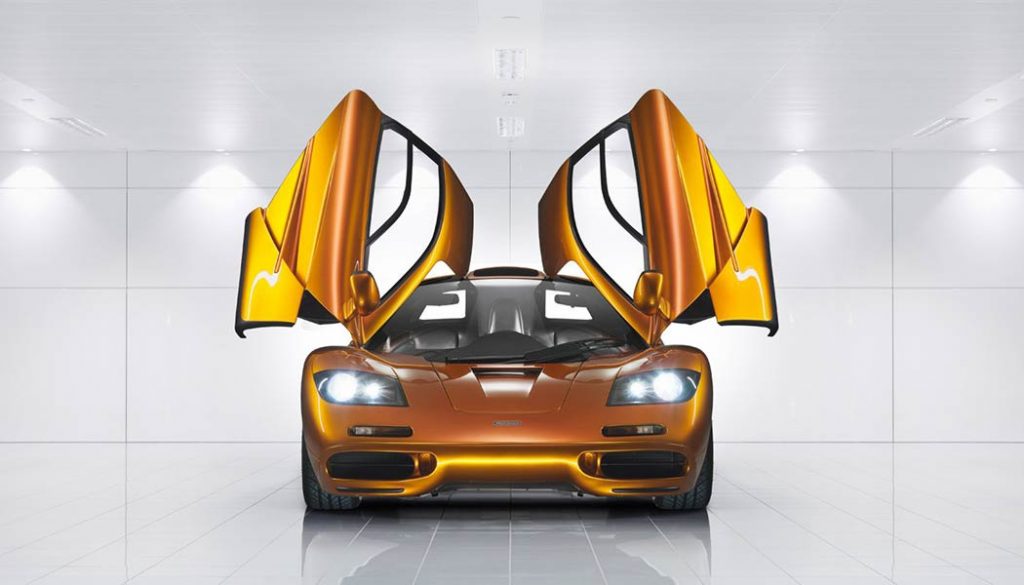

It can be argued that the McLaren F1 has made more impact on the supercar and racing world than any other model. And while that might be up for debate in some circles, one detail is concrete: the man behind the McLaren F1 road car’s design is Gordon Murray.
There aren’t many visionaries in the automotive design realm that can lay claim to such an impressive car, or even a small part in the design. And yet, the McLaren F1 is just one of many car designs Gordon Murray has been a part of.
Recently, Murray unveiled the iStream Superlight, a car production system that incorporates extreme rigidity, maximum safety and reduced weight. And at an event called One Formula, showcasing all his past work, he made another announcement.
Gordon Murray’s company, Gordon Murray Automotive, will produce limited-run cars on the iStream production system to demonstrate its capabilities. We don’t know the details exactly. What we do know is what Murray has told us it will be: a “return to the design and engineering principles that have made the McLaren F1 such an icon.” AKA, a new supercar.
That’s pretty awesome. But until we know more about the supercar to come, let’s look back at some of the cars he’s had a hand in designing so far.
Obviously, it’s the most famous and well-known name in his profile. Once holding the title of as the fastest production car in the world, the McLaren F1 has a top speed of 240.1 miles per hour.
The unique design of the car itself positions the driver in the center of the monocoque and allows a passenger on either side. It uses extremely valuable materials to keep it light, including carbon fiber, titanium, gold, magnesium and kevlar.
At its time, it was lighter weight and more streamlined than its other supercar competitors. It’s been called “the greatest automobile ever created,” “the finest driving machine yet built for the public road,” and “the greatest automotive achievement of all time.”
Funny enough, at the time Gordon Murray had to convince McLaren’s founder to take a chance on his design. Since then, very few would have the nerve to question his designs.
A brand new TVR Griffith is being launched and should be on the road in 2019. It’s the first production car to implement Murray’s iStream production system. On that lightweight system, the car will weigh in around 1,250 kilograms, or around 2,800 pounds.
Related Search Topics (Ads)
The car has a Cosworth-tuned Ford Coyote 5.0-liter V8 with 500 horsepower and a six-speed manual gearbox. Capable of reaching 200 mph and accelerating to 100 miles per hour in six seconds, it’s going to be a beast.
If you want one, a TVR Griffith will start at around $130,000 US. But act fast, as 500 launch models are being pre-sold. Who knows what will come available after that?
It doesn’t look like much at first, but the T.25 is a proving ground for urban mobility. Using Formula 1 technology, the T.25 incorporates the iStream production system for lightweight, functional and safe urban transportation. At less than 8 feet long, the T.25 is smaller than a Smart Fortwo.
It’s a three-seater car (somehow), and has a three-cylinder gas engine mounted at the rear. Top speed is around 65 miles per hour. An electric version is also out there, the T.27. Both were purchased by an unnamed production company and were supposed to be built for release in 2016.
Toray requested a vehicle design from Gordon Murray also, the Teewave AR.1. The name itself is an acronym of sorts for Toray Eco Efficient Wave Advanced Roadster 1. It’s unique, and although it may not be everyone’s cup of tea, it precisely serves its purpose.
The Teewave AR.1 utilizes Toray’s lightweight and ultra-modern materials such as carbon fiber reinforced plastics (CFRP). Inside the car, the Teewave AR.1 uses Ultrasuede that’s made from recycled and biomass fibers, and even uses CFRP shock absorbers.
The compact two-seater coupe has a removable top and is a rear-engine, rear-wheel-drive design.
It’s nothing like the McLaren F1, but the McLaren MP4/4 actually competed in the Formula 1 racing series in 1988. The McLaren MP4/4 won 15 of 16 races that year, far exceeding anyone’s expectations, other than the design team themselves. It’s the car that gave Ayrton Senna his first championship.
Gordon Murray was instrumental in utilizing a turbocharged Honda V6 in the McLaren MP4/4 that year. It made a spectacular 650 bhp, although that’s much less than the previous year’s 950-bhp engines.
While Murray played a massive role in the MP4/4’s successful design, it was molded from lightweight carbon fiber with help from Hercules Aerospace. As a side note, all six chassis that were molded are still in existence today.
It’s Gordon Murray’s humanitarian contribution. The OX was developed through the inspiration of a philanthropist, Sir Torquil Norman. This cargo vehicle is designed to make transportation and cargo delivery much easier in Africa and at a reduced cost.
The OX was designed as a flat-pack vehicle. That means it’s shipped in parts, kind of like Ikea, and assembled at its destination. There aren’t likely to be any tiny allen keys needed, though. Once built, its capacity is two metric tonnes, 13 people, or eight 44-gallon drums.
Three prototypes have been developed and the project is currently in the crowdfunding stage. Once they being shipping out, six flat-pack OX vehicles can fit in a shipping container as opposed to two fully-assembled units. And no, Gordon Murray isn’t Swedish.
Related Search Topics (Ads)